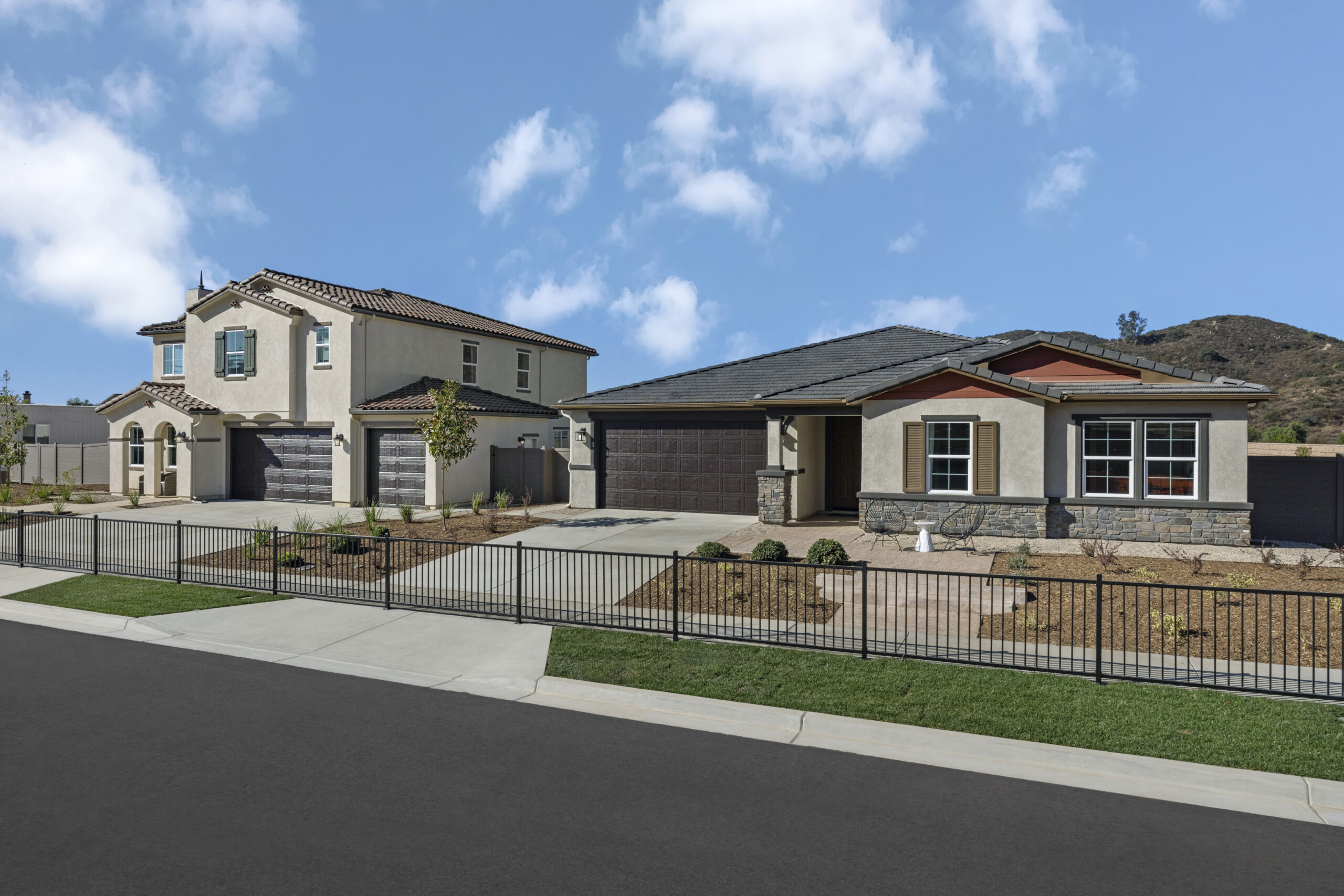Episode Description
Today’s solutions news:
Both Arielle and Karissa tackle the theme of housing but from very different angles. First, Arielle talks about why the days of conventional senior homes should be over. Now, care centers for older adults are being completely reimagined to combat loneliness and cognitive decline, and we’re loving the results! Then, Karissa draws inspiration from the innovative cooling architecture of ancient civilizations to help us make our homes more climate resilient.
The Optimist Daily is a project of The World Business Academy.
Donate link: https://www.optimistdaily.com/donate-to-support-the-optimist-daily/?gift=Y%20http://
Transcript
Theme music
Arielle
Hello and welcome to the Optimist Daily’s Weekly Roundup. I’m Arielle.
Karissa
And I’m Karissa. And we’re working hard to put solutions in view and optimism and movement.
Arielle
All right, we’re back with another episode of our podcast to share the solutions from the Optimist Daily this week. How are you doing Karissa?
Karissa
I’m doing well. I am on a, I guess work-cation you could call it, in Idaho
Arielle
Mm-hmm.
Karissa
Visiting my friends and family.
Arielle
Oh yeah, you mentioned that last week.
Karissa
Yeah, so it’s been really nice to catch up with everybody and it’s just been a nice change of scenery. It’s kind of smoky here because there’s a lot of fires going on…
Arielle
Hmm, that’s right.
Karissa
Kinda has to do with my solution that I’ll talk about in a little bit, but that’s what’s going on on my side of the world right now, not too far from where I usually am.
But what’s going on with you, Arielle?
Arielle
It’s definitely not smoky here in Amsterdam. The weather just changed very quickly to fall weather this week…
Karissa
Oh.
Arielle
…And that might be why I’m also feeling a little tickle in the back of my throat and having sinus headaches, but overall I’m feeling fine! Yeah, we just kind of have to trudge through this time of year when the seasons change.
Karissa
Yeah, over here it’s still so hot. We’re usually pretty hot until November. I mean, we’ll probably fluctuate between fall weather and heat. That’s usually how it goes.
Arielle
Well, at least you get to go through it with your friends and family over there. Did you say you were staying with a friend or with your family?
Karissa
With my friend for now and then I’ll be going over to my family’s house today, so I’ll see them for the rest of the weekend and then I’ll head back home.
Arielle
Ah, nice! Living with family and living with different generations in the same house is kind of what my solution is about today. So, do you mind if I take that somewhat clumsy segue into my solution?
Karissa
Totally (laughs). I am very eager to hear what you have to share today.
Arielle
Okay so, we are going to get into something that I found quite thought-provoking and it’s about how housing for older adults is being totally reimagined to combat loneliness and cognitive decline.
Karissa
Ah.
Arielle
So, the title is: Belong is an intergenerational housing solution to combat loneliness among older adults. And spoiler alert, it involves adorable kids and also college campuses.
Karissa
Oh okay, so kids, college, older people living together. I love what I’m hearing.
Arielle
This kind of solution is called intergenerational housing, and it’s gaining traction as a way to address loneliness in older adults by bringing together different age groups under one roof. One standout example of this concept is a place called Belong, and it’s a housing development in Chester, England. It combines senior living, daycare centers, and a real sense of community, all in the same spot.
Karissa
Ohh wow, that’s such a cool idea. What does this look like in practice? Are the residents just hanging out with kids all day?
Arielle
Yeah, kind of!
Karissa
(Laughs)
Arielle
The older residents, who are affectionately called ‘grand friends’.
Karissa
Aww!
Arielle
Yeah. So cute, right? So, the grand friends are all welcome to visit the children at any time, and the setup is super organic. So, residents at nursing care or at independent apartments can just pop in for story time or join group activities, or simply have spontaneous chats in the cafe. As Caroline Baker, who’s the Head of Dementia and Care Quality at Belong puts it, “It doesn’t feel like a care facility. It feels like you’re part of a community.”
Karissa
That sounds so amazing. And I can imagine the kids love it too. But what are the benefits for the older residents?
Arielle
Yeah. So, the benefits go way beyond just having cute kids around to talk to. The research shows that these intergenerational interactions are actually great for cognitive health. Especially for seniors with dementia, because being around children can help older adults reconnect with long-term memories and engage in activities that boost their cognitive skills. Baker explains, saying “Particularly for people living with dementia, being around kids enables them to think about their previous lives and connect with their own childhood.”
Karissa
Yeah, I hadn’t thought about it like that, but it makes a lot of sense because it’s almost like the presence of children brings back those early memories for them. That’s really powerful.
Arielle
And there’s also the emotional aspect. For many older adults, feeling isolated or as though they’re not needed anymore, I can imagine is really tough, but in these intergenerational settings they get to act as role models, and they have a sense of purpose. Plus, it’s been found that interacting with older adults helps children develop a more realistic and empathetic understanding of aging.
Karissa
It’s totally a win-win. The kids can learn from the older adults and the older adults feel connected and valued. Well, this is really awesome at Belong, but are there other places doing this or is it just happening here?
Arielle
Oh, yeah, that’s a great question. Belong is a part of a growing global trend. For example, Providence Mount Saint Vincent in Seattle has been combining senior housing with a nursery since 1991 and the interactions between the kids and residents happen every day. And it’s been a huge success over there!
In Minneapolis, the Pillars of Prospect Park opened in 2020, and they have a daycare for the public and staff members’ children. Erin Erdahl, who works there, says it’s comforting to have her child close by so she can just come by for a visit anytime.
Karissa
Nice. So, it sounds like this trend is also catching on in the United States.
Arielle
Definitely. We’re also seeing an increase in university-based retirement communities, which I find super interesting, where seniors live on or near college campuses and can take part in campus life. There’s Mirabella at Arizona State University. And Lasell Village in Massachusetts, where seniors can even use their student IDs to attend classes and events.
Karissa
That’s super cool. I really love that. It’s like a retirement and college experience mash-up which are two very different phases of life!
Arielle
Yeah, exactly. And as our population ages, we’re going to see even more interest in these kinds of communities. Brian Schachter. I’m going to come clean and say I don’t know if I’m saying this, uh last name, right… but it’s S-C-H-A-C-H-T-E-R. So, Brian Schachter, chief investment officer at Watermark Retirement Communities, says that baby boomers are looking for vibrant, community-focused living. So not the isolated senior housing of the past. He explains: “We’re trying to push the envelope in developing top-of-the-line care homes that are driven around hospitality, fitness, wellness, and dining options in urban locations.”
Karissa
So, it’s not just about housing anymore, it’s about creating a whole lifestyle that’s engaging and connected.
Arielle
That’s exactly it. These models of intergenerational living meet social needs and offer practical solutions to challenges like affordable housing and community integration. And as the stigma around senior living fades, we’re moving toward a more connected and caring society.
Karissa
Yeah, that’s really cool. And I guess kind of going back to the college campus aspect of it, college campuses are really built around you know, the hospitality, fitness, wellness, dining options in, like, all one place.
Arielle
Mm-hmm.
Karissa
And I think college is one place where a lot of people feel a strong sense of community so seeing that being, you know, translated into these senior livings, whether it’s around college students or little kids…
Arielle
Or both!
Karissa
…is really cool and sounds like a really awesome approach for the future of senior living.
Arielle
Mm-hmm. Yeah, I think we wrote a story on the Optimist Daily somewhat recently about some of the happiest places in the world.
Karissa
Yeah.
Arielle
It said that some of the happiest places in the world were not the richest or the wealthiest, but countries and cultures that really encouraged community engagement…
Karissa
Oh yeah.
Arielle
…and like asking for help or resource sharing, that’s where people were the happiest. So, I guess it just makes sense, you know not to keep seniors, college campuses, and daycares separate, but to blend them together, and it seems like a more human experience as well.
Karissa
This is really beautiful and I’m so glad that you shared it with us, and I hope to see a lot more places adopt this approach.
Arielle
Yeah. And by the time we’re retirement age, Karissa (laughs) then maybe they’ll have this system down pat so that we can just kind of glide in and…
Karissa
Exactly.
Arielle
…enjoy our senior years, our golden years.
Karissa
Maybe I’ll live in a retirement community and go visit some of the college parties (laughs).
Arielle
Yeah, exactly (laughs). Um, but yeah, that was pretty much all I had today. But you also have a pretty interesting solution.
Karissa
Mine also kind of has to deal with urban planning in a sense, and it has to deal with homes, so I’ll just jump into it and share the title, which is called ‘Keeping homes cool in hot, dry climates: lessons from ancient civilizations.’
This was a pretty interesting solution we shared this week because, as global temperatures rise and power outages become more common, particularly during severe heat waves, which as I mentioned earlier, the West is going through…
Arielle
Mm-hmm.
Karissa
Current building designs become increasingly vulnerable.
So, glass facades, sealed windows, and dependency on air conditioning render most modern constructions useless when the power goes out.
Arielle
Yeah, didn’t this happen recently in Houston, Texas when the city went without power for days during… um I think it was Hurricane Beryl?
Karissa
Yeah, that was something that was in the news recently. And I think Texas gets hit a lot too, with major climate disasters.
Arielle
Yeah, natural disasters.
Karissa
Modern design is not…
Arielle
Not resilient without electricity.
Karissa
Resilience is super important in these modern constructions, and we can kind of look toward the ancient civilizations, because long before the invention of electricity, ancient civilizations living in some of the world’s hottest and driest places, devised inventive techniques to stay cool.
By studying their practices, modern architects and city planners can learn significant lessons about how to make our buildings more resilient in the face of climate change.
Today I kind of want to take us on a little trip around the world of the ancient civilizations and look at some of their designs. I guess I’ll start with the Sumerians, who had communal cooling by design.
So, the Sumerians, who lived in present-day Iraq about 6000 years ago, developed construction techniques to cope with their harsh sun-scorched surroundings.
Archaeological research shows that Sumerians built dwellings with thick walls made of heat-absorbing materials such as Adobe and mud. These materials progressively released the day’s heat at night and kept indoor temperatures cooler throughout the day, so it was a win-win. Sumerian cities emphasized close-knit construction, and these buildings were all crowded together, and it minimized the amount of surface area exposed to direct sunlight. And these small courtyards allowed for ventilation and natural light, while narrow alleys gave shade all day.
Arielle
Okay, so this tight-knit construction probably also helped the community bond, kind of like what we were just talking about!
Karissa
Yeah. So yeah, exactly, relating to the solution you shared Arielle, this creative urban planning not only improved cooling but created this really big sense of community among people. So, it demonstrates that efficient design can benefit both individuals and society.
Arielle
Mm-hmm.
Karissa
All right, so now I’ll travel over to the ancient Egyptians who harnessed the wind in their design. The ancient Egyptians also endured blistering heat, but they responded with ingenious design solutions.
While many palaces were made out of heat-resistant stone, common residential buildings were usually made of mud brick, which provided insulation and protection from the sun.
But the Egyptians also invented a sophisticated cooling system known as the malqaf, a wind-catching tower that directs breezes into buildings, circulating cooler air and expelling heat. The Egyptians optimized natural ventilation by orienting these wind catchers towards the prevailing breezes. Kind of like an ancient air conditioning. And this ancient technology is still in use today in regions of the Middle East and Central Asia, blowing cool air into enormous buildings without the need for air conditioning.
Arielle
Oh wow.
Karissa
Very inventive of the Egyptians, and a very interesting way to harness the wind.
Moving on to the southwestern United States, the Ancient Puebloans mastered the art of staying cool.
Like the Sumerians and Egyptians, they built their dwellings out of thick, heat-resistant materials like mud brick and rock. So, a common theme is mud brick. However, the Puebloans also went one step further, carefully examining the orientation of their buildings in relation to the Sun.
So, they would build entire villages under the overhang of south-facing cliffs, keeping their homes sheltered during the summer and allowing sunlight to warm them in the winter. The deliberate use of solar direction resulted in a natural temperature management system that is still applicable in modern architectural design.
Arielle
Yeah, that makes so much sense. And I feel like I see a lot of Adobe-style houses when it comes to the American Southwestern general, like in the media and everything as well.
Karissa
Yeah, exactly. In New Mexico, Arizona, they’re very common to have Adobe-style houses. And they’re also really pretty.
Arielle
Mm-hmm.
Karissa
And I have one more example to share from this article and it’s about the Muslim caliphates.
One of the most difficult aspects of living in a hot, dry area is water scarcity. But modern stormwater management techniques concentrate on diverting rainwater away from urban areas. But ancient civilizations considered stormwater as a precious resource that could be collected and reused.
During the ninth century, Muslim caliphates in North Africa and Spain developed dwellings with rainwater gathering devices. Rooftops were sloped to funnel rainfall into underground cisterns, and courtyards were built to collect and store water for plant irrigation.
This practical approach not only made life in arid regions more sustainable but also resulted in lush, shaded green spaces in urban areas.
This is something I think people are kind of turning to now with a lot of scarcity in water in different communities around the world. And the ancient Mayans also had a similar design in their societies with their plazas and cities where they collected rainwater in reservoirs for the dry season.
Now cities such as Mendoza, Argentina, have revived similar systems and use them to irrigate street trees and other urban vegetation.
Arielle
That’s really cool! And this certainly serves as a reminder that old wisdom can offer beautiful solutions to today’s environmental concerns, and that’s true for both of our solutions. Combining older people’s wisdom…
Karissa
(Laughs)
Arielle
…with the current generation (laughs).
Karissa
Exactly.
Arielle
Not only for environmental solutions but also for everything else.
Karissa
That’s definitely the common thread. You know, as temperatures rise all around the world, the teachings from these ancient cultures become more pertinent than ever. Architects and designers can incorporate these time-honored approaches into modern structures and produce more energy-efficient and resilient environments. From wind catching towers to rainwater harvesting. And just, you know, fireproof, weatherproof buildings, these ideas provide practical, energy-efficient solutions to help us adjust to a warmer world.
Arielle
I really love our common thread. Not only is it housing, but it’s also taking different generations, ancient or.. or just older.
Both
(Laugh)
Arielle
And applying it to whatever’s happening now.
Karissa
Yeah!
Arielle
Well, that was a wonderful roundup of solutions. We have some other great solutions from this week that you can find on our website, optimistdaily.com, and they include:
Karissa
Bored at the gym? Circuit training offers a fun workout solution for getting fit fast. Three myths about self-help and personal growth we should all stop believing. Reproductive rights: Alaska judge overturns law allowing only physicians to perform abortions. And six simple ways to rebuild your routine following the summer break. I need to look at that one (laughs).
Arielle
Yeah, me too (laughs).
We also have: Clean energy investment doubles that of fossil fuels, helped by US rural electrification efforts. Prepare your plants for moving day: a guide to bringing your plants indoors this fall. Helping young people of color navigate the music industry with Carnegie Hall’s The B Side.
Karissa
Nice. Those are some good solutions, but if you want to start your day off right next week, make sure to subscribe to our free daily newsletter to get our stories straight to your inbox.
Arielle
We also have a lot more on our social channels. You can find us @Optimist Daily on all of our platforms, including Threads and Pinterest. The only different one is on X. There we are @OdeToOptimism.
Karissa
And we are a small team of optimists working hard to bring you positive news. If you want to support our mission of putting optimism into the world, click on the link in the show notes to find out how.
Arielle
And remember that support doesn’t always have to be financial. You could just recommend our podcast to a friend, leave a positive review on Apple or Spotify, forward a link to a loved one, or share some of the solutions on your socials, anything like that would be a huge help for us.
Karissa
Arlighty, well. As always Arielle it was great to be here with you today and share these solutions! And looking forward to being back next week with even more.
Arielle
And in the meantime, I hope you and all of our listeners have a wonderful weekend.
Karissa
Alrighty everyone!
Both
Bye!











